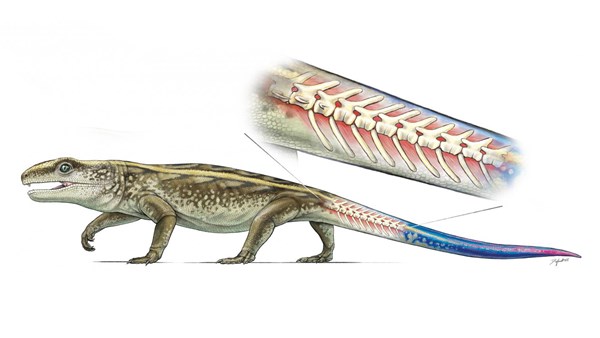This ancient reptile shed its own tail to escape meat-eating predators 280 million years ago.
Researchers at the University of Toronto Mississauga are describing how a group of small ancient reptiles defended themselves around 289 million years ago. The creatures could actually detach their tails to avoid being devoured by predators.
The Captorhinus weighed around four pounds and was found in large numbers during the Early Permian period. The species was much smaller than the large carnivores of the time, and had to try and evade predators while foraging for food.
“One of the ways captorhinids could do this, was by having breakable tail vertebrae,” explained first author Aaron LeBlanc.
There are many lizard species today that have the ability to detach their tails, but the Captorhinus is the earliest known reptile that had this skill. Just like the modern species that have the same ability, the prehistoric creatures had tail vertebrae with cracks in the middle. These crevices acted like perforated lines that could be easily separated.
“If a predator grabbed hold of one of these reptiles, the vertebra would break at the crack and the tail would drop off, allowing the captorhinid to escape relatively unharmed,” explained Professor Robert Reisz.
The advantage of the Captorhinus to literally break away from aggressors likely promoted the success of the reptile in spreading across the supercontinent of Pangea. While this incredible ability disappeared when the Captorhinus died out, it reemerged in descendant species of lizards around 70 million years ago.
The researchers analyzed over 70 tail vertebrae in both juvenile and adult specimens and compared these skeletons to relatives of captorhinids. The experts established that the tail-breaking talent was unique to this particular group of reptiles during the Permian period.
The scientists also discovered that the vertebrae cracks were features that formed naturally as the reptiles were developing. In addition, they found that young captorhinids had more distinctive cracks than adults, suggesting that the juveniles were the primary targets of predators.





























